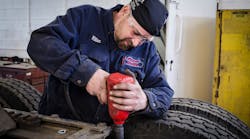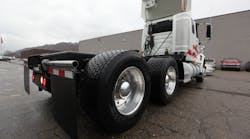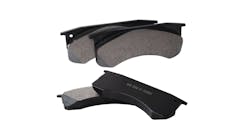Proper maintenance is key to keeping a vehicle safe and running as long as possible. Yet too often, shocks are overlooked, and that can create problems.
Shocks “are a much more important part of the vehicle system than most realize, and as they wear out, it isn’t long before something else gives too,” says Jeff Schlump, commercial sales at Gabriel Ride Control (www.gabriel.com). “As a rule of thumb, when changing worn tires and doing regular maintenance, the shocks should be changed as well to prevent other, worse damage before it starts.”
The company is the inventor of and an industry leader in the design, engineering, development and production of automotive ride control technology in North America.
Function
The suspension of a vehicle carries the load and distributes weight through the tires and onto the driving surface, Schlump explains. The vehicle rides on air or steel springs to absorb vibration and keep it relatively smooth on uneven terrain. The shocks control the movement of the springs, keeping them steady and in control.
“It’s this setup that allows a driver to accurately ‘feel the road’ as they drive,” he says.
“As the shocks start to wear out, they can’t adequately control the springs. As the springs bounce all over the place, so does the rest of the vehicle. It causes a loss of consistency in the tires’ contact with the road, the work of the brakes and the response the driver feels from the vehicle.
“The extra vibration allowed by bad shocks is distributed throughout the load to places that are not meant to handle it,” he continues. “It can cause damage to cargo, lighting components, onboard electronics, refrigeration units, etc. Anything that can be damaged by excessive vibration suffers when the shocks wear out.”
Effect on Tires
Bad shocks also cause “interesting wear patterns” on tires, observes Gabriel’s Schlump. Once the shocks start to go and the springs start to bounce out of control, the tires can’t maintain consistent contact with the road. As they bounce and vibrate while rolling over the ground it causes unusual scuffing on the treads of the tires.
“When tires display these bald spots the phenomenon is sometimes called ‘cupping,’ Schlump says. “A tire that has started to cup is definitely one that should soon be replaced. Otherwise the loss of traction will start to compromise driving safety.”
Gabriel recommends that whenever a vehicle is taken in to replace the tires, the shocks be changed as well.
“If tires are already showing signs of cupping, the chances are the shocks have started to wear down,” he says. “Any time a vehicle is in the shop is a good time to perform other maintenance checks.”
If old shocks were the reason for the tire wear in the first place, replacing the tires will only be a temporary fix, he says. The worn shocks will continue to put unnecessary strain on the tires and the frame of the vehicle, “causing damage faster than before and shortening the lives of brand new tires. Leaving the old shocks on the vehicle ends up being a waste of repair costs in the long run.”
Replacement Time
The frequency of shock replacement can depend on a lot of factors, notes Gabriel’s Schlump, including what kind of loads a vehicle is transporting, where it typically has to operate and what kind of drivers are usually driving it. Shocks that are consistently subjected to extra strain should be replaced more often.
If tires have already started to cup due to extra bouncing from worn shocks, replacing the shocks will not halt the damage, he says. Studies have shown that if the treads have begun to display bald spots, replacing the shocks will only slow down the wear and tear, but not stop it.
“In the end, it makes the most sense to replace the shocks when you replace the tires,” concludes Schlump. “Even if the shocks aren’t responsible for the tire wear, they are much cheaper to replace than tires, air springs or other expensive hardware that can be damaged by driving with bad shocks.
“It is better to foot the bill for some preventative maintenance than wait for more obvious signs of damage that will be harder and more expensive to fix down the line.”






